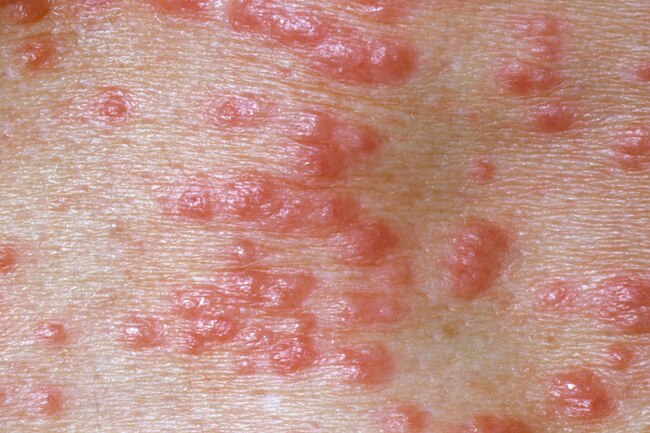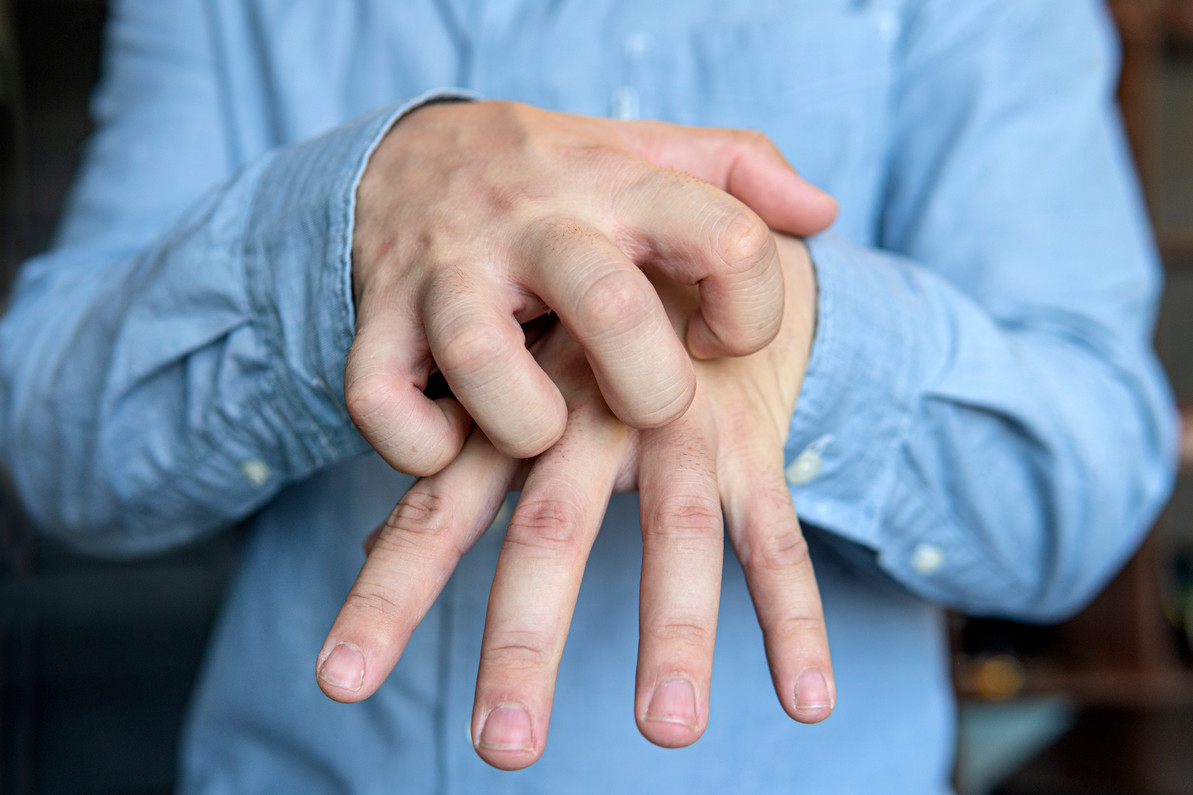Scabies
Scabies: What's That Itch!
WHAT'S
THAT
ITCH!
Posted by Our Pharmacists,
27th October 2022
What Is Scabies?
(Aetiology / Epidemiology)
Scabies is a dermatological condition caused by the arachnid mite Sarcoptes scabiei var. hominis. This barely visible mite is host specific for humans, with the female burrowing through the epidermis and depositing faeces and laying eggs in her trail. These eggs hatch 3-5 days later maturing to adult mites within a fortnight . The “unexplainable itch” which is the predominant diagnosis feature of most scabetic infestations is caused by the human body’s immune reaction to the fasces, eggs, and mites present on and within the epidermis.
Scabies is relatively common in school-age children, closed communities such as nursing homes and boarding facilities . In Australia, the Aboriginal population residing in communities or over-crowded housing has the highest risk of incidence with reported figures of more than 50% of children, and 25% of adults being infested in remote areas . If left untreated, it is more than likely that other family members will also become infested, spreading the condition.

How is it spread?
(Modes of Transmission)
Transmission of scabies is temperature dependant with the Sarcoptes scabiei mite being immobilized at temperatures below 20°C. Primarily, human to human transmission requires at least 20 minutes of contact for the mite to transfer to the new host . Often this type of transmission is linked with sexual activity or poor housing conditions more commonly seen in the lower socio-economic end of the population. The mites may however survive for up to 56 hours away from the host in areas of higher humidity (e.g. North Queensland), and may therefore be transmitted by contaminated clothing, bedding and furniture along with contaminated epithelial debris shed by a scabetic individual. After transfer to a new host, mites burrow beneath the skin in less than 2.5 minutes.
Originally many community programs aimed at treating the canine population (which was thought to be one of carriers of infectious scabies) have been abandoned with current research indicating that infectious scabies is NOT transmitted from dogs to humans . Whilst canines may carry a variation of the parasite which is occasionally transferred to a human host, it is unable to reproduce because of host-specificity. The presence of this parasite may cause the human to itch, but the population of mites is limited to those transferred through contact with the canine host .
Scabies are given to him who has no fingernail's
- Swahili Proverb
What are the symptoms?
(Clinical Presentation)
The clinical presentation of scabies varies extensively, with the body’s immune response to the mite being the key determinant in presentation. As a result, immediate and delayed (Type 1 & 4) hypersensitivity reactions are implicated in the cutaneous reaction.
On primary exposure, it may take 2-3 weeks from infestation to the onset of symptoms, however after initial exposure to the mite; symptoms may appear within 1-4 days of re-infestation .
Itch:
The itch is the predominant indicator of a scabies infestation with a generalized pruritis which is often exacerbated throughout the night and after hot showers, coinciding with sensitization to the mite. This itch is caused by a combination of immunological events and non-specific factors as hypersensitivity to the mite and by-products increases. Often, secondary dermatitis spreads to the affected areas with scratching, immunological reactions, and symptomatic pharmacological treatment (such as topical corticosteroids) applied without reference to the causative agent.
Burrows:
An infested individual may present with papules, vesicles and / or linear burrows containing mites and eggs commonly in the inter-web space of fingers and toes, along with lesions on the wrists, elbows, axillary folds, thighs, abdomen, buttocks, areolas of female breasts and male genitals . These intraepidermal tracks are made by the egg-laying female as she burrows through the dermis and are usually <10mm in length. The opening to the burrow often presents with mild scaling and erythema which is sometimes masked by scratching or good hygiene.
Other Presentations:
Whilst uncommon, scabies may also cause urticarial or blistering rashes in very hypersensitive and immunocompromised patients . For comprehensive list of clinical presentations of scabies see attached Appendix 1 - Clinical Presentation of Scabies (Wines & Shumack, 2000)
Are there any complications?
Complications that often present in Aboriginal communities include infection with Group A Streptococcus (GAS) Streptococcus pyogenes bacteria and Staphylococcus aureus (in more southerly parts of Australia). This leads to pyoderma (impetigo or skin sores) which has been noted in 50-70% of all scabetic individuals. Treatment of GAS infections may simultaneously occur with treatment of scabies, with the recommended treatment regimen still a single dose of Benzathine penicillin.
Group A Streptococcus (as above) is also the main cause of ‘post-streptococcal glomerulonephritis’ (ASPGN) and ‘acute rheumatic fever’ (AFR) which often leads to chronic renal disease in patients repeatedly exposed to the causative agents (exacerbated by scabetic infestations) .
What should I expect? (Prognosis)
Primary infestation (on first exposure to Sarcoptes mite) presents symptoms after 3-4 weeks coinciding with sensitization of the immune system to the mite and its products. These symptoms (as above) are experienced by the patient until treated with appropriate pharmacological and non-pharmacological treatment regimens.
After treatment (with topical antiscabetics or oral ivermectin – As discussed in Patient Treatment Guide) pruritis may continue for 3 weeks and may require symptomatic treatment (e.g. topical corticosteroids) for remaining pruritis. It is important that all household members undergo treatment to prevent re-infestation after treatment and chronic scabetic infestations.
Patients who have been re-infested may show signs and symptoms in 1-4 days and should not delay in treatment.
Referral
Whilst scabies may be treated effectively within the pharmacy setting by antiscabetics and symptomatic treatments such as Lyclear for the pruritis without intervention by a medical practitioner, there are some circumstances where referral is required.
The following list is indicative of situations in which the customer should be referred for medical examination:
- Crusted (Norwegian) Scabies
- Immunocompromised
- Previous treatment has been unsuccessful
- Young or elderly patient ( <2 years / > 75 years)
- Pregnant
SUBSCRIBE TO OUR NEWSLETTER
Recent Posts
-
Dec 11, 2025
What Does A CPAP Machine Do?
If you've been diagnosed with obstructive sleep apnoea, chances are you've heard about CPAP machines … -
Nov 26, 2025
Enhancing Independence — A Comprehensive Guide To Daily Living Aids
Maintaining autonomy in daily routines is important for people of all ages, particularly those navig … -
Nov 12, 2025
Alternate Therapy For Snoring or Mild OSA
Alternate Therapy for Snoring or Mild OSA(Obstructive Sleep Apnoea)Why Seek Alternativ …




